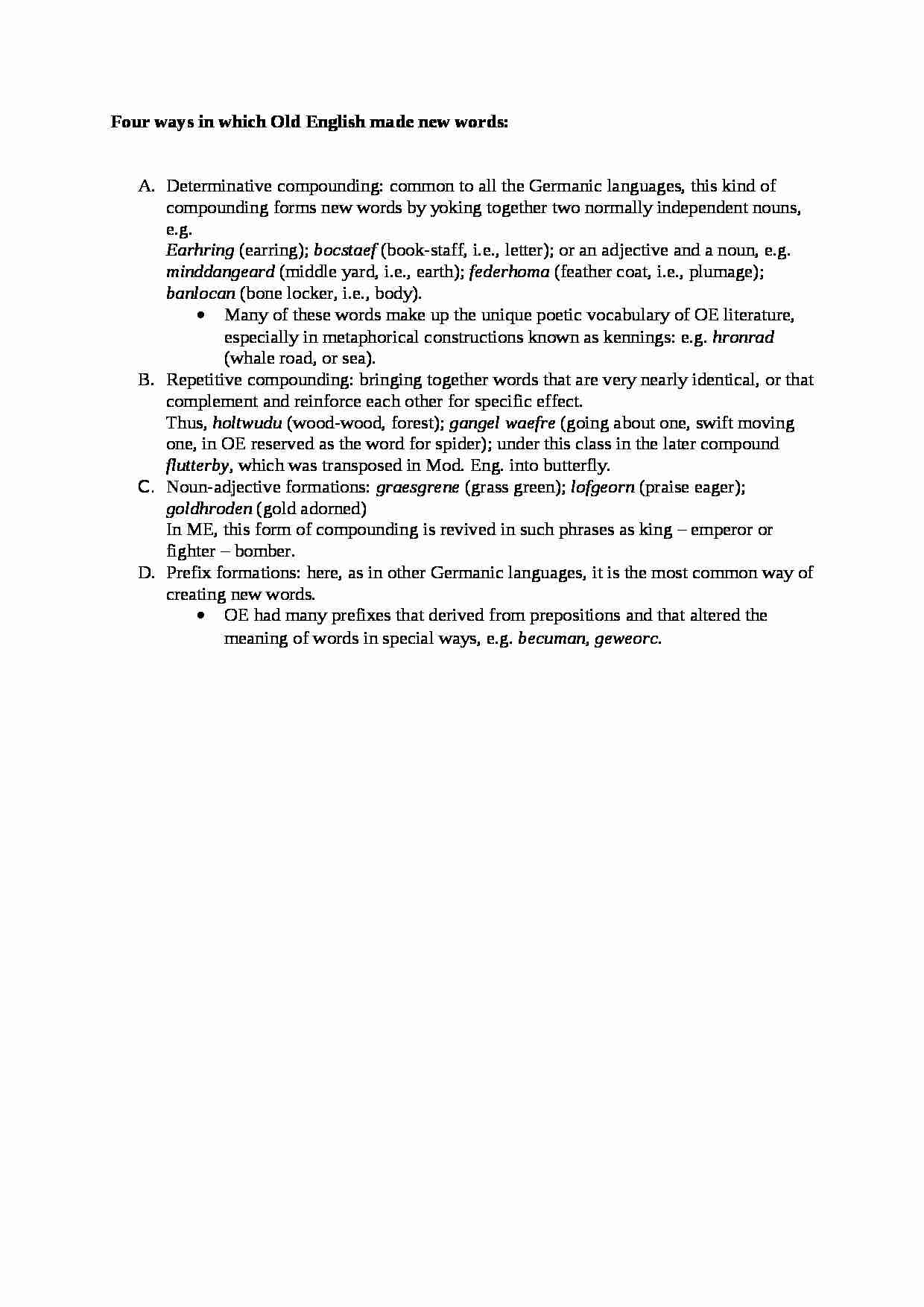
Four ways in which Old English made new words:
Determinative compounding: common to all the Germanic languages, this kind of compounding forms new words by yoking together two normally independent nouns, e.g.
Earhring (earring); bocstaef (book-staff, i.e., letter); or an adjective and a noun, e.g. minddangeard (middle yard, i.e., earth); federhoma (feather coat, i.e., plumage); banlocan (bone locker, i.e., body).
Many of these words make up the unique poetic vocabulary of OE literature, especially in metaphorical constructions known as kennings: e.g. hronrad (whale road, or sea).
Repetitive compounding: bringing together words that are very nearly identical, or that complement and reinforce each other for specific effect.
Thus, holtwudu (wood-wood, forest); gangel waefre (going about one, swift moving one, in OE reserved as the word for spider); under this class in the later compound flutterby, which was transposed in Mod. Eng. into butterfly.
Noun-adjective formations: graesgrene (grass green); lofgeorn (praise eager); goldhroden (gold adorned)
In ME, this form of compounding is revived in such phrases as king - emperor or fighter - bomber.
Prefix formations: here, as in other Germanic languages, it is the most common way of creating new words.
OE had many prefixes that derived from prepositions and that altered the meaning of words in special ways, e.g. becuman, geweorc.
... zobacz całą notatkę



Komentarze użytkowników (0)